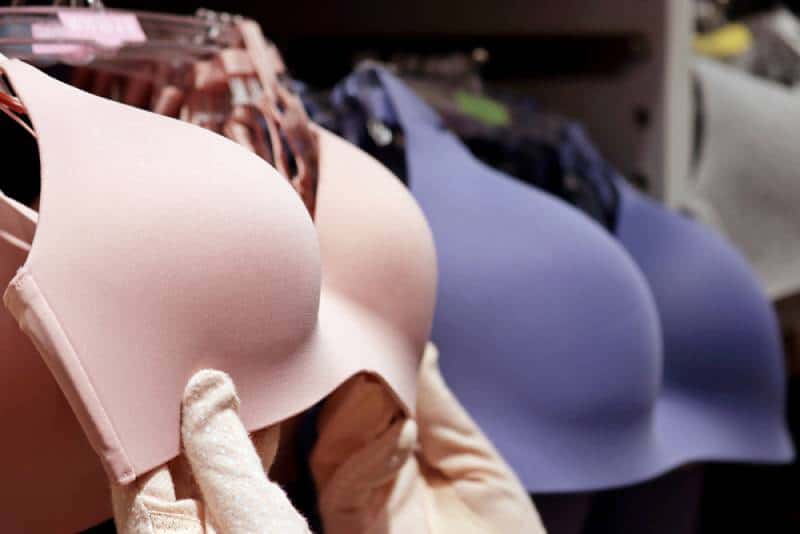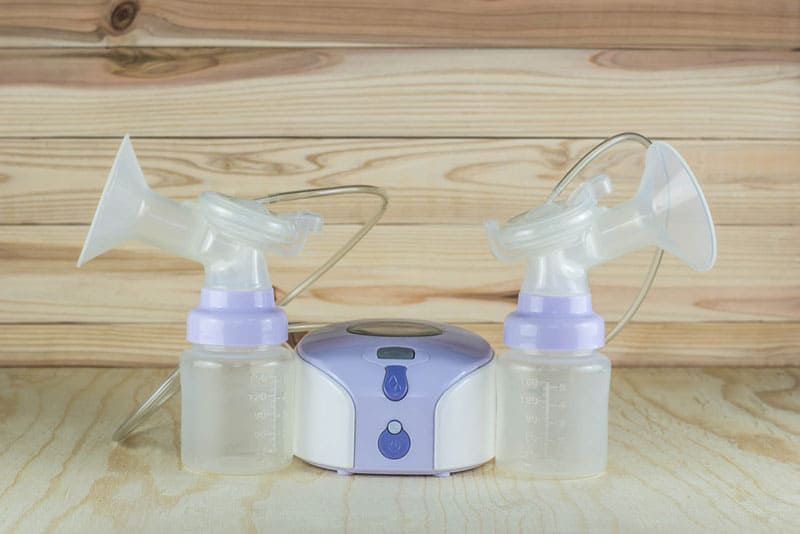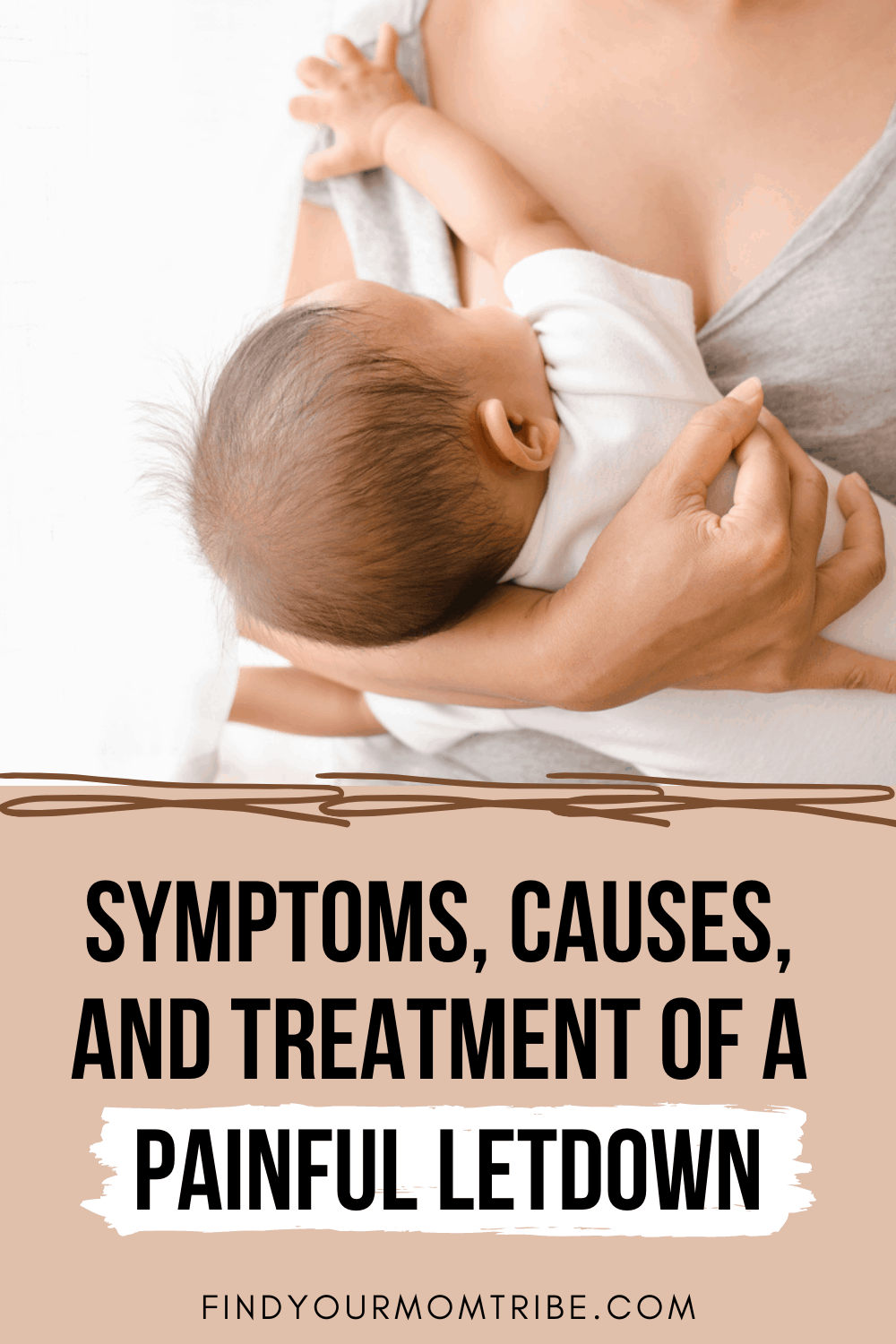Even though nursing is one of the most beautiful things you’ll have the chance to experience, not everyone’s nursing journey is smooth.
In fact, there are some problems many breastfeeding moms experience, and painful letdown is one of the most common.
What Is A Letdown?

Simply put, a letdown is the release of breastmilk in a breastfeeding mother. It is actually your body’s reflex response to the baby’s suckling.
The hormone that is responsible for this entire process and for your milk ejection reflex is called oxytocin. Whenever your baby breastfeeds, oxytocin is released into your system. It then causes contractions in the glands of your breasts which induces the flow of milk.
Phantom Painful Letdown Reflex
This phenomenon is common for moms who breastfed in the past. A phantom letdown reflex is when you feel the letdown sensation months or years after weaning.
You get the impression that milk will come out of the breast, the same way it used to, but nothing actually happens.
It feels exactly the same as it did while you were feeding your baby – the tingling sensation and pins and needles are all there.
Sometimes, phantom letdowns will cause pain for moms who have dealt with overactive letdowns.
Even though this will probably scare you, the phantom letdown is something many weaning moms face.
As long as there is no sudden milk production, there is nothing to worry about.
Symptoms of A Painful Letdown

Letdown is a perfectly natural process that shouldn’t cause you any pain. What you’ll probably feel is tingling in your breast. After all, this is the sensation of a normal letdown.
However, sometimes you may feel that something is off. You don’t have to be an expert for your intuition to tell you that this is not how a letdown should feel – you shouldn’t feel pain when your milk lets down.
There are times when the tingling in your breasts becomes too much to bear. Sometimes, it’s painful and uncomfortable, and that sensation lasts throughout the entire latching session.
Other symptoms include a kind of warm sensation in your breasts and sometimes the milk drips from one breast, while you’re nursing from the other.
So, why does this happen? What causes a painful reflex and how can you treat it?
The first good news is that this is probably nothing you should be concerned about. The second thing is, I’m about to give you the answers to all of your questions and more.
How Long Does A Painful Letdown Last?
There is some good news here: Painful letdowns don’t usually last for long. This is something you’ll probably face in the early days postpartum. However, the pain and the uncomfortable sensation is likely to go away after a month or so.
Causes And Treatment Of A Painful Letdown When Breastfeeding
1. Overabundant milk supply

If you’re a new mom who is fighting to produce enough milk, you assume that there is no such thing as too much milk. This is not true as struggling with an overabundant milk supply can cause numerous problems as well.
One of them is a painful letdown. To be precise, it’s not the amount of breast milk you produce that causes this problem, but rather the flow of milk.
Instead, an oversupply causes a forceful letdown which basically causes your baby to choke, gasp for air, or start gulping while nursing. At first, you’ll be more worried about this than about the pain you’re feeling.
Luckily, this is nothing that should cause alarm. It’s just that your newborn can’t take the large amount of milk that flows too quickly.
Naturally, the speed of the milk is causing you pain as well. Consequently, the strong let down irritates your breasts and nipples.
If this is something you can relate to, don’t focus on treating the painful letdown itself. Instead, focus on dealing with the oversupply of milk.
First and foremost, let your baby drain one breast at a time. Most moms alternate between breasts too quickly, which is not the best idea when you’re struggling with oversupply.
The number one mistake you should avoid when you try to decrease the milk supply is nursing or hand expressing too often. The more milk you express, the more your body produces.
So, you end up trapped in an endless cycle. Instead, do your best to pump less, without disregarding the amount of milk your baby needs, which you can determine with the help of a pediatrician.
2. Engorgement

Simply said, engorgement is when your breasts are full, maybe a little swollen and tight. Besides that, your breasts are painful, hard, and warmer than usual.
Sadly, this is something most moms face after the arrival of a new baby and engorgement can be one of the causes of a painful letdown.
It’s actually pretty expected – your breasts are extra sensitive, so it’s perfectly normal for the letdown to be painful as well.
This is another situation where you should focus on dealing with the cause instead of the consequence.
Therefore, what you should do is try and handle the engorgement the best way you can.
Again, don’t switch between breasts too often. Instead, wait until one breast is “emptied” before you give the baby the other one.
Also, it would be best if you could create a pumping schedule or nurse every hour and a half to two hours during the day. When it comes to night breastfeeding, try doing it every two to three hours.
The important thing is to apply ice on your swollen breasts. This will definitely help you ease the pain.
Please note that you should put ice or something cold on your breasts in between feedings but you should do something completely opposite a few moments before nursing.
Instead of ice, put a warm and wet towel on your nipples. This will not only reduce the swelling, but it will also help you with your overactive letdown.
3. Breast infection

Another common cause of a painful letdown is a bacterial or viral infection of the nipples or of the entire breasts. Neither of these can be treated by yourself.
Please, if you notice any symptoms of either of these breast infections, seek help from your healthcare provider. There you’ll get the treatment you need.
Thrush
Thrush is connected with Candida Albicans. It is a yeast infection that grows and can cause multiple problems.
In most cases, it develops in the mouth or throat.
However, if your baby develops thrush and you have a cracked nipple, you can easily be infected. This is most likely to happen if your baby has recently had antibiotics.
One of the first symptoms of a yeast infection is painful and swollen breasts. Your nipples might get itchy and your letdown will definitely be painful.
If you suspect that you have thrush, it’s perfectly safe to keep on nursing. However, you must avoid storing the expressed milk.
Besides taking the necessary medication, the only thing you can do is pay more attention to hygiene. Wash your breasts, your hands, and the things your baby touches and uses.
It would be great if you could reduce your sugar intake as well. Also, start taking some probiotics to help you get rid of the infection as soon as possible.
Mastitis
Even though mastitis is primarily an inflammation of the breast tissue, it can also cause infection. It can be caused by a bacteria that comes into the breast through the sore or cracked nipples or when you don’t breastfeed regularly.
When you’re at risk of an infection, your health care provider will prescribe antibiotics. Some of the symptoms are pain, redness, and warmth of the entire breast.
The good news is that mastitis can be treated easily. You’ll probably get antibiotics and further instructions.
There is no harm in breastfeeding your baby from the breast that’s affected by this condition. Of course, it all depends on whether or not you can take the pain.
Don’t worry about taking antibiotics – your health provider knows that you’re breastfeeding so you’ll get the right ones.
4. Clogged nipple pores

When you suffer from clogged milk ducts, it means that the milk is stuck and can’t find a way out of your breasts. A clump of hardened milk blocks the nipple pore.
This results in your skin closing the pore. You end up with a milk bleb or a milk blister. Besides this, the channel behind your nipple will be blocked which is normally painful.
There is no actual remedy for this issue. However, this is not something you should worry about since it’s a problem almost all new moms face.
The best way to treat clogged nipple pores is to massage the area yourself. You can use things such as vinegar (just make sure your nipples aren’t cracked), salt, and warm water or oil olive during this massage.
Soak a towel, a breast pad, or a cotton ball in one of these things and apply it to your nipple. Sometimes, a simple warm and wet compress will do the trick.
Once you treat your plugged ducts successfully, the most efficient way to prevent this issue from occurring again is to hand express yourself before each nursing. This way, you’ll get rid of pasty and stringy milk and there will be no blockages.
Consequently, your letdowns won’t hurt anymore, which is what you’ve been trying to accomplish all along.
If none of these tips and tricks help and you continue having problems with clogged nipple pores, maybe it’s time to visit your healthcare provider. You’ll probably be prescribed antibiotics that will help you in no time.
5. Raynaud’s syndrome

If you’ve heard of a condition called Raynaud’s syndrome, you probably connect it with fingers and toes. By its definition, Raynaud’s syndrome is an intermittent loss of blood in some extremities.
This happens as a consequence of a spasm in the blood vessels, also called vasospasm. Basically, vasospasm means that your body experiences a constant contraction of the blood vessel. Consequently, the vessels narrow down and reduce blood flow.
It usually impacts fingers and toes, but it’s not uncommon for the nose, lips or ears to be affected as well. The first symptoms are pain and loss of normal color – the affected area turns white and blue.
This phenomenon is not a permanent state, rather it’s an episode that lasts a few minutes to a few hours. After the episode is over, the affected area gets its color back and it starts to burn.
Sounds familiar, right? However, you haven’t experienced any of these symptoms in your hands or feet – you have felt this sensation in your nipples.
Well, this is nothing strange because there are some cases where Raynaud’s syndrome impacts the nipples of breastfeeding women. The cause is pretty much the same as with other body parts – reduced blood flow due to the spasm of arteries.
Nevertheless, the nipples are the most sensitive of all these body parts and therefore, the pain is sometimes difficult to bear. It usually happens after feeding, although it’s possible to feel it during nursing as well.
The biggest problem here is that this painful sensation can last for hours. Once the warmth of your baby’s mouth touches your nipple, you will feel the burning sensation, and the nipple’s natural color will return.
Beware that stress and exposure to the cold are the number one triggers for this phenomenon. Also, Raynaud’s syndrome can be a consequence of the wrong breastfeeding position. Keep in mind that you should avoid smoking and caffeine as well.
The best prevention is to always keep your breasts warm. Don’t expose them to anything cold if you don’t want to decrease the blood flow to the nipples.
While you’re breastfeeding, have the other breast covered with a warm cloth or just with your hand.
While the episode is occurring, massage your nipples with olive oil (make sure it’s warm), take a warm shower, or heat your breasts with a hairdryer.
6. PMS related pain

You know how your breasts become swollen, sensitive, and even painful to touch during the premenstrual period? Well, sadly, this doesn’t magically disappear once you have a baby and start breastfeeding.
In fact, your hormone levels continue to vary before your period which often causes soreness and pain in your breast. Naturally, you’ll have sore nipples, and if you breastfeed, you’ll experience a painful letdown reflex.
The thing to do here is to track your symptoms before you act on them. Basically, check whether the breastfeeding letdown hurts you the same all the time or if it just happens prior to your period.
Unfortunately, there is no exact cure for this issue. You can take ibuprofen if you can’t handle the pain (don’t experiment with other pain relievers since they can harm the baby through your milk).
7. Ill-fitting bra

Believe it or not, a seemingly insignificant thing such as your bra can cause you a lot of problems, including a painful breastfeeding letdown.
An ill-fitting bra is a common cause of breast pain. It might be the shape, the fabric, or the size that doesn’t suit your breasts and nipples. Either way, it’s time to switch to something more comfortable.
After all, there are maternity nursing bras available for all breastfeeding moms. By using them, you’ll reduce the risk of painful letdowns.
8. Breast pump

In general, expressing yourself with the help of an electric or manual breast pump shouldn’t be painful. When you first start doing it, you’ll probably feel a tingling sensation that doesn’t last more than a few seconds on average.
When your milk starts to let down, you’ll probably feel something similar to pins and needles. Nevertheless, this shouldn’t last for long nor should it be overwhelming.
On the other hand, if your breast pump hurts you and the letdown continues to be painful even after a few minutes into “breastfeeding”, something is definitely not right.
Before anything else, let’s rule out the possibility that you’re using the pump or the pumping gear incorrectly. Try lowering the suction pressure, since it might be what’s causing you pain.
Also, don’t forget to always keep your hands, breasts and the pump clean. Now that we have that all figured out, remember to adjust the size of the flange.
The truth is that most women’s nipples fit into an average size flange but it isn’t always the case. You’ll know that you have picked the right size if your nipple is positioned in the center of the flange.
It must have enough space to move through the pump’s tunnel without including any of your areola tissue. If you suspect that your breast pump is the cause of your problem, please contact your lactation consultant.
There you will get all the answers and the help you need.
9. Breast surgery

If you have had any type of breast surgery in the past, especially breast reduction, that can be the cause of your forceful letdowns.
In fact, any surgery that has affected the nerves in your areola or nipple can have this type of consequence.
To Wrap Up
The most important thing here is that a painful letdown is not something to panic about. As uncomfortable as it is, it’s nothing uncommon and it will go away soon enough.
If this issue continues to cause you trouble and if breastfeeding keeps on hurting you, please contact your doctor or lactation consultant.
Good luck and remember, this is not a permanent problem.
Like this post? Please share or pin it for later. You can also stay in the loop and follow us on Facebook, Instagram or Pinterest.

This post contains affiliate links. Please see our full disclosure for more info.

